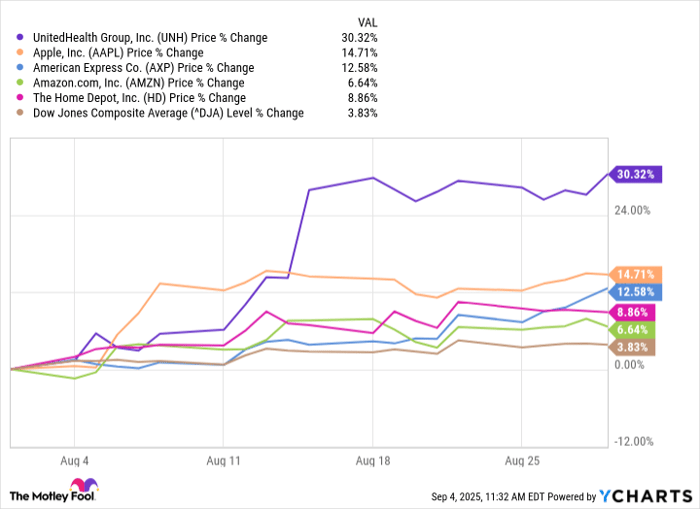Fed Signals Economic Caution Amid Rate Cuts and Inflation Outlook
The U.S. Federal Reserve operates under a dual mandate to manage inflation and ensure full employment. The central bank aims for the Consumer Price Index (CPI) to increase by approximately 2% per year while striving for a strong job market without a specific target for unemployment rates.
When inflation or the labor market strays from these goals, the Fed responds by adjusting the federal funds rate, which is the interest rate at which banks lend to one another overnight. A recent example of this strategy occurred in 2022 when the CPI reached a 40-year high of 8%, prompting significant rate increases.
Start Your Mornings Smarter! Wake up with Breakfast news in your inbox every market day. Sign Up For Free »
In 2024, the Fed began reversing its stringent rate policies, cutting the federal funds rate three times between September and December, as inflation appeared to stabilize. Following the latest policy meeting last week, the Fed provided insights regarding future interest rate adjustments.
Here’s how many cuts could be on the table in 2025.

Image source: Getty Images.
Latest Fed Report Contains Mixed Signals
The Federal Reserve releases a Summary of Economic Projections (SEP) four times a year, outlining the Federal Open Market Committee’s (FOMC) views on inflation, economic growth, unemployment rates, and interest rates for the future.
The most recent SEP, released during the central bank’s March meeting, includes some concerning updates. Most FOMC members now project U.S. economic growth in the range of 1.6% to 1.9% for 2025, down from the previous forecast of 2% to 2.3% in December.
Additionally, the median projection for the Personal Consumption Expenditures (PCE) inflation measure has increased to between 2.7% and 2.8% for 2025, up from 2.5% to 2.6%. Members also revised their estimates for the unemployment rate higher, predicting it to rise between 4.4% and 4.5%.
In summary, compared to the December SEP, the Fed is now preparing for a weaker economy indicated by higher unemployment and rising inflation—a challenging combination.
On a more positive note, the FOMC estimates that the federal funds rate could end this year between 3.88% and 4.12%, suggesting up to two potential interest rate cuts from the current 4.37% level. Contrarily, the CME Group‘s FedWatch tool suggests the possibility of three rate cuts this year, indicating a potentially easier borrowing environment that may benefit households and businesses.
Impact of Interest Rate Cuts on Stocks
Rate reductions typically boost the stock market over the long run. Lower yields on risk-free assets like cash and Treasury bonds encourage investors to seek better returns in growth-oriented sectors, bolstering stock prices. Moreover, cheaper borrowing costs for businesses can enhance their earnings and support expansion efforts.
Historically, however, the onset of rate-cutting cycles has preceded market corrections, defined as declines of 10% or more for the benchmark S&P 500 (SNPINDEX: ^GSPC):

Target Federal Funds Rate Upper Limit data by YCharts
Past rate cuts coincided with significant economic disruptions: the dot-com bubble in 2000, the 2008 financial crisis, and the COVID-19 pandemic in 2020. These events contributed to market declines rather than direct causation from the Fed’s actions.
Typically, during a normal cycle, the Fed cuts rates in response to economic weakness. Falling corporate earnings can occur in slower growth periods, leading to a decline in stock market valuations as investors adjust their expectations.
Economic Indicators Raise Concerns
While no imminent crisis looms for the U.S. economy, recent indicators suggest a potential slowdown. The current unemployment rate stands at 4.1%, which, although low historically, has been trending upwards. The Fed expects it could rise even higher, reaching 4.5% this year.
A weakening job market may hinder consumer spending in the future, adversely affecting corporate earnings. Consumer confidence appears shaky as evidenced by the University of Michigan U.S. Consumer Sentiment Index, which dropped to 57.9 in March, the lowest since November 2022, a period when the S&P 500 was undergoing a bear market.
Furthermore, Goldman Sachs has revised its U.S. GDP growth estimate for 2025 to 1.7%, down from 2.2%. This adjustment aligns with the Fed’s conservative projections and is attributed to President Trump’s trade policies, including tariffs that could curtail consumption and trigger a global trade conflict. Goldman has also lowered its price target for the S&P 500 from 6,500 to 6,200, anticipating that slower growth will hamper returns.
Other analysts share similar sentiments, as Yardeni Research has cut its S&P target from 7,000 to 6,400, reflecting a cautious outlook on economic growth and market performance.
Investors Eye Opportunities Despite Lowered Market Expectations
Recent revisions in market expectations have prompted some investors to reconsider their positions. However, it’s essential not to rush into selling stocks, particularly since the S&P 500 index remains around 8% lower than its record high. Historically, the market tends to rebound to new peaks, making corrections an opportune moment to invest. Although approaching volatility from weaker economic activity and declining interest rates may create short-term uncertainty, investors who maintain their holdings during this period could see substantial future gains.
Is Now the Right Time to Invest $1,000 in the S&P 500?
If you are contemplating an investment in the S&P 500 index, you should first assess the current recommendations. The Motley Fool Stock Advisor analyst team has pinpointed what they believe to be the 10 best stocks available for investment right now, with the S&P 500 index not making the list. These selected stocks have the potential to generate high returns in the years ahead.
Reflect on Nvidia’s recognition among this top list on April 15, 2005. An initial investment of $1,000 based on that recommendation would now be worth an impressive $744,133!*
The Stock Advisor service offers a straightforward, accessible strategy for investors, providing support on portfolio creation, ongoing analyst insights, and two new stock suggestions each month. Since its inception in 2002, the Stock Advisor service has more than quadrupled the cumulative returns of the S&P 500. To discover the latest top 10 stock recommendations, consider joining Stock Advisor.
*Stock Advisor returns as of March 24, 2025
Anthony Di Pizio holds no shares in any of the stocks discussed. The Motley Fool maintains positions in and recommends Goldman Sachs Group and CME Group. The Motley Fool has a disclosure policy.
The opinions expressed in this article are those of the author and do not necessarily represent the views of Nasdaq, Inc.







